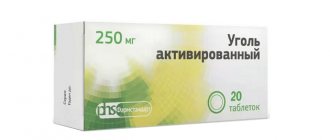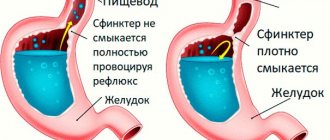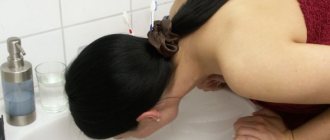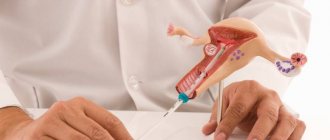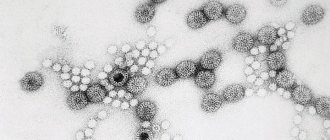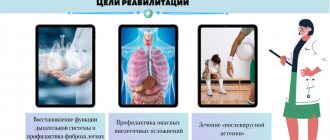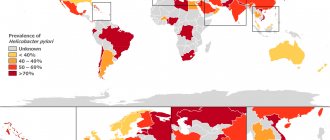On the way to an ideal figure, a woman can face dangerous pitfalls, including such as bulimia and anorexia . Such eating disorders do not allow one to adequately assess the current situation, normalize weight, and can lead to serious consequences, the worst of which are disability and death. Therefore, it is so important to recognize the signs of an eating disorder in time and seek qualified help .
• TEST FOR ANOREXIA AND BULIMIA
Screening helps identify psychological eating disorders - the EAT-26 test . The Eating Attitudes Test (abbreviated EAT ) is a diagnostic tool developed at the University of Toronto (England) in 1979 by the Clark Institute of Psychiatry.
The Eating Attitudes Test was originally intended for the preliminary diagnosis of anorexia nervosa and consisted of 40 questions . Subsequently, the developers were able to modify the test and created a version of the EAT-26, consisting of 26 questions that were clearer and more useful for identifying eating disorders.
The EAT-26 test yielded higher scores than the original version and was more uniform in screening for a wide range of eating disorders. Subsequently, the EAT-26 eating attitude test became widely used to diagnose not only anorexia nervosa, but also the eating disorder bulimia nervosa.
Currently, the EAT-26 is the most widely used instrument for research into eating disorders in men and women of all ages.
• TEST FOR ANOREXIA AND BULIMIA
The Eating Attitudes Test is a diagnostic tool for psychological eating disorders that was developed at the University of Toronto by the Clark Institute of Psychiatry in 1979. The full English name is Eating Attitudes Test, or EAT for short.
Initially, the EAT eating attitude test was intended to screen for, identify, anorexia nervosa and was a 40-question test. Over time, deeper knowledge about the nature of eating disorders made it possible to modify the self-test, and in 1982, the developers created the EAT-26 scale, consisting of 26 questions and having a more unified application. The EAT-26 test has proven to be clearer and more useful for diagnosing various eating disorders than the original version. In addition, in this form it made it possible to identify not only anorexia nervosa, but also bulimia nervosa.
The EAT-26 test for anorexia and bulimia is widely used for screening today. Currently, the EAT-26 Eating Attitudes Test is the most widely used, universal instrument in eating disorder research.
Top
EAT-26 Anorexia Test Results
After passing the test for anorexia and bulimia, determine the overall total score in accordance with the answers you gave to 26 questions - statements.
25 out of 26 questions (the 26th question is an exception), you need to assign the appropriate points, namely:
1. answers “always” - 3 points; 2. answers “usually” - 2; 3. answers “often” - 1; 4. The answers “sometimes”, “rarely” and “never” are assigned 0 points.
With question 26 it’s the other way around:
1. The answer “always”, “usually”, “often” is assigned 0 points; 2. answer “sometimes” - 1 point; 3. the answer “rarely” - 2; 4. The answer “never” - 3 points.
The test result is assessed based on the final total of all points for 26 questions.
If the total score exceeds 20, you are very likely to have an eating disorder. In this case, you need to contact a psychotherapist or other doctor of the appropriate profile. Do not rush to try on a diagnosis (anorexia or bulimia), the EAT-26 test is not an independent diagnostic tool, this method is used for the purpose of preliminary assessment of a person’s psychological state in relation to food intake. A diagnosis, even a preliminary one, is not made only on the basis of high test scores, and treatment is not prescribed!
This test is a screening test; a high score obtained during this test may mean that you probably have anorexia or bulimia. Meanwhile, a number of items in the test are specific and may indicate some other eating disorders - for example, compulsive, restrictive and other eating disorders (there are many of them).
Thus, the eating attitude test allows us to identify a “risk group” of people who need to consult a doctor in the field of mental health, but it does not cover all eating disorders that exist today.
• FOOD EATING TEST EAT-26
The EAT-26 test itself consists of 26 main test questions and 5 additional ones. To pass the test, giving answers to 26 main test questions, the subject must choose one of the proposed answers, namely: “always” (“constantly”), “usually”, “quite often”, “sometimes”, “rarely” or "never". When answering additional 5 questions, the subject chooses only one of two proposed answer options - either “yes” or “no”. The scale is filled out by the subject independently; a specialist does not participate in its completion. Therefore, before taking the test, you need to familiarize yourself with the testing methodology in detail.
EAT-26 includes 3 criteria that identify eating disorders:
1. Number of points for 26 main tests - questions for anorexia and bulimia (part one); 2. Weight loss or behavioral symptoms over the past six months (part two); 3. Low weight compared to the norm for age and gender.
If you have one or more of these criteria, consultation with a psychotherapist is recommended. This eating attitude test will help you determine if you have an eating disorder that requires professional help. The test does not replace or cancel consultations with a psychotherapist or other specialist. It is not intended to make any diagnoses. It is only a preliminary assessment tool and cannot be used to make a diagnosis. The EAT-26 Eating Attitudes Test only identifies the presence of problems, and diagnosis and treatment can only be made and prescribed by a qualified specialist.
Top
What is an eating attitude test?
An eating attitude test can help you determine if you have an eating disorder that requires professional help. This test does not cancel or replace consultations with a psychotherapist or other specialists, and does not establish any diagnoses. Its task is to identify eating disorders, whatever its nature (tendency to uncontrolled food intake, refusal to eat or other eating disorders).
The EAT-26 has 3 evaluation criteria:
1. The number of points scored by answering the main 26 test questions (the first part of the test); 2. Behavioral symptoms or amount of weight lost during the last 6 months (second part of the anorexia and bulimia test); 3. Low weight compared to the norm (medical norm) for your age and gender.
If you have even one of these criteria, consultation with a psychotherapist is recommended. If several are present at once, you simply need the help of a specialist, perhaps even vitally important.
EAT-26 contains 26 main questions and 5 additional questions. To pass the test (self-test in Russian), you need to answer these 26 basic questions by choosing one of the following answer options: “never”, “rarely”, “sometimes”, “often”, “usually” or “ constantly". To pass additional testing, answering 5 additional, specific questions, choose only one of two answers - “yes” or “no”. Before taking the test, you need to familiarize yourself with the method of operation of this scale, since it is filled out by the person being examined independently, the specialist does not take part in it.
• EAT-26 (SELF-TEST IN RUSSIAN), PART ONE.
To pass the EAT-26 test, please answer the questions below as accurately, completely, and honestly as possible. Remember: there are no right or wrong answers. There are only honest answers to the test - questions that correspond to your state and feeling.
Read the statements below and mark the answer on each line that best matches your opinion. To pass the test, check the answer box, and upon completion, calculate the sum of points corresponding to it.
- EAT-26: Test Assertions
________________________
EAT-26 Anorexia Test Part One
Please answer the following questions as carefully, honestly and responsibly as possible. Remember: there are no right or wrong answers. The answers should most closely correspond to your opinion, your true attitude towards eating.
Read the statements in the table and mark your answer in each line.
| Statement | Never | Rarely | Sometimes | Often | Usually | Constantly |
| The very thought of getting better scares me | ||||||
| When I'm hungry, I refrain from eating | ||||||
| I feel preoccupied with thoughts about food | ||||||
| I know firsthand the attacks of hunger, when I uncontrollably absorb food and cannot stop. This happens to me | ||||||
| I know exactly how many calories are in the food I eat | ||||||
| Before I eat something I divide it into small pieces. | ||||||
| I especially abstain from foods that are high in carbohydrates (bread, rice, potatoes, etc.) | ||||||
| I tend to feel a heightened sense of guilt after eating. | ||||||
| I feel that people close to me would prefer that I eat more | ||||||
| I really want to lose weight | ||||||
| I vomit after eating | ||||||
| I am extremely preoccupied with thoughts about the fat I have | ||||||
| By playing sports, I think that in this way I burn calories from my body | ||||||
| People around me say that I'm too thin | ||||||
| I spend more time eating than others | ||||||
| I eat diet foods | ||||||
| I abstain from sugary foods | ||||||
| I can't shake the feeling that food-related issues control my life. I notice this | ||||||
| I have self-control in matters related to food. | ||||||
| I feel discomfort when I eat sweets | ||||||
| I'm on a diet | ||||||
| When there is a feeling of emptiness in the stomach, I like it | ||||||
| I feel pressure from others who want me to eat more | ||||||
| I devote too much time to issues related to food. | ||||||
| I have an impulsive urge to vomit after eating | ||||||
| I enjoy trying some new, delicious dishes. |
• TEST FOR ANOREXIA AND BULIMIA: CALCULATION AND EVALUATION OF RESULTS
Determine the total score based on your answers to all basic questions.
The 25 test questions (26th exception) are scored as follows. Answers are assigned points:
1. “never” - 0 points; 2. “rarely” - 0 points; 3. “sometimes” - 0 points; 4. “often” - 1 point; 5. “as a rule” - 2 points; 6. “always/constantly” - 3 points.
Question 26 is assessed differently:
1. “always” - 0 points; 2. “as a rule” - 0 points; 3. “quite often” - 0 points; 4. “sometimes” - 1 point; 5. “rarely” - 2 points; 6. “never” - 3 points.
If, as a result, the total score of the test for anorexia and bulimia exceeds 20 points, there is a very high probability of deviations and disorders in your relationship to food intake. That is, we can say that you have some kind of eating disorder, presumably anorexia or bulimia. However, remember that the EAT-26 test is not an independent diagnostic tool, but is used for a preliminary assessment of attitude towards food intake. It is wrong to make a diagnosis based solely on the results of this test.
A number of items on this screening are specific to certain eating disorders not related to anorexia and bulimia - for example, restrictive, compulsive eating disorder, etc. That is, the test makes it possible to identify a “risk group” who need to consult a doctor in the field of human mental health, but does not cover all existing eating disorders today.
Top
EAT-26: Eating Attitudes Test (diagnosis of anorexia and bulimia)
Sasha:
03/05/2019 at 02:06
1. High risk 2. We advise you to consult a specialist 3. 57/168 I have been involved in sports for 10 years. Already at the age of 8, my coach told me that I was very capable and that for even better results I needed to lose weight. I went in for swimming, and this is not a sport where girls are small and petite. And so, 9-year-old me began to lose weight. At the age of 9, I was on all sorts of diets, but none of them were particularly successful. At 11, I had to go to a sports reserve school, where they started making fun of me even more about my weight. Then I stopped eating. The training was 11 times a week, 5 hours a day, and at the same time I didn’t eat for two weeks. I asked the coach to leave, but she sat in the shower and cried, for which the coach told me that “training is not so hard that you should cry.” I started puberty earlier than all my peers and hips, breasts, etc. began to appear. And of course, all my peers perceived it as fat. I am now 16. I have been suffering from eating disorder for 8 years now. Only my friend knows about this. I had to give up sports because I didn’t have enough strength. I eat normally, 1300+-cal. per day, but at the same time I train at home myself and burn 200-400 calories. As you already understand, my weight is normal, but I know very well that muscles weigh more than firms, and I have a lot of muscles. In 3 months I lost 7 kg. The problem is that over these 8 years I have studied nutrition and a healthy lifestyle quite well. I can almost accurately name the color and nutritional properties of most products. I subconsciously understand that I’m not fat and something tells me that it’s time to stop, but just the thought of being overweight scares me. My best friend, in order to make me understand, told me about a friend of hers who had anorexia and was able to overcome it, but along with the thoughts of “how terrible it is,” I thought about how cool that girl is and how I would like to stop eating , but the problem is that I know too much about eating disorders and am afraid of the consequences. I'm at the point where I'm contradicting myself. One side of me says that everything is fine and I can calm down, but the other says that I need to stop eating, that I’m fat, that I shouldn’t go out, because they’ll laugh at me. I do not know what to do. I’m sure that many will think that everything is fine with me, but I’m afraid of myself, because I started vomiting after meals, although I know very well what this leads to. This is a strange feeling, but I don’t know who to ask for help. I don't want to be pathetic
Answer
Who needs to take the test
This test is worth taking for overweight people, depressed people, and those experiencing emotional turmoil.
The disease appears as a result of the emotional drama experienced. Not finding emotional comfort, a person tries to eat away at troubles. At the same time, he is not able to control his appetite and considers himself absolutely healthy. The only visible sign that a person is experiencing psychogenic stress and is “treating” it by overeating is excess weight. This in turn leads to depression. And depression is more often diagnosed in people who are dissatisfied with their shape and weight.
The disease can appear for various reasons:
- The body does not receive enough nutrients. This happens if you eat a lot of low-calorie foods that are poor in vitamins and microelements.
- Constant restrictions, which often lead to nutritional breakdowns. The questions in the binge eating test are designed to detect changes in your eating patterns that are not noticeable to you.
- Depressive states and emotional situations. This could be the loss of a loved one or failure at work.
- Malfunction of the hypothalamus, which is responsible for appetite.
If at least one of these indicators is present in your life, you should take this test. The online test questions are designed to determine whether you have a tendency to overeat.
Test
The interactive answer form allows the system to independently calculate points and, at the end of the bulimia test, display the result with a brief explanation. It is important to take the results obtained seriously and visit a specialist when the first signs of the disease appear.
The effectiveness of the prescribed therapy depends on how accurately the patient follows the doctor’s recommendations. The basic principles of treatment are the cognitive-behavioral approach, drug treatment, herbal medicine and other methods.
To make sure you have a healthy relationship with food, take the free test on our website and take care of yourself.
Who is the test suitable for?
The bulimia test is a two-part survey. The questions are simple and are recommended for teenagers and adults to answer. Parents cannot give answers for their children, as the interpretation of the result will be distorted.
If you have several of these signs, take a test to understand whether this is a short-term experience or symptoms of a dangerous disease:
- a person is afraid of thoughts of becoming fat, or constantly thinks about food;
- attacks of uncontrolled eating of food without the ability to stop or dividing portions into small pieces are increasingly occurring;
- avoidance of foods high in carbohydrates, particularly sugars;
- increasingly, the patient begins to experience vomiting or diarrhea, even though he previously forcibly removed food from the body;
- the feeling of guilt after a heavy meal grows, which leads to a wild desire to lose weight;
- The patient increasingly has thoughts that there is fat in the body, it needs to be removed with the help of strict restrictions and sports, while food controls the life of the subject.
Test structure
Your task is to answer a few simple questions. You don’t have to write anything down, just click on the already prepared answer. Everything happens online. The free online test is based on questions that most accurately describe the main symptoms of compulsive overeating:
- You eat even large amounts of food quickly.
- Hiding or leaving food in strange places.
- You overeat even when you don't feel hungry.
- Eating food alone.
- Often there is a feeling of guilt due to a large or extra portion.
- Unreasonable fatigue, dissatisfaction with appearance, and decreased libido began.
Don't get distracted when giving answers. It is better to take the test alone and in a calm atmosphere.

